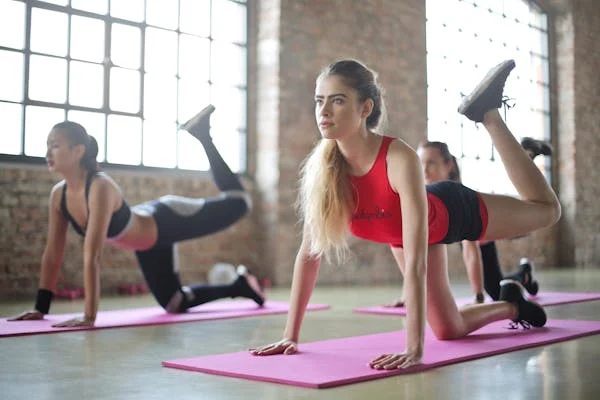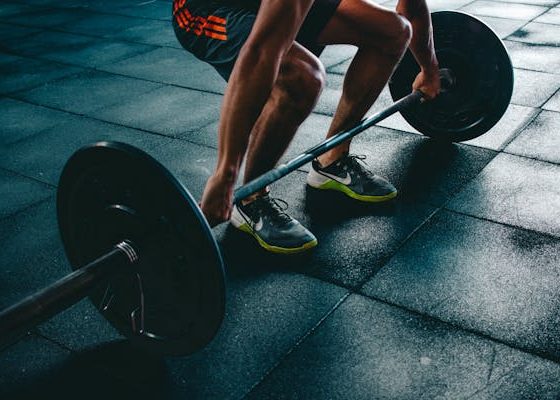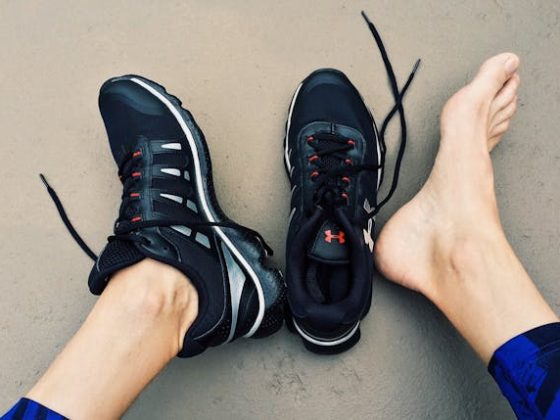Physical Activities can maintain our optimum health level. It enables us to do physically impossible things for inactive people, especially at this age. With the help of physical activities, the excess fats and the result of obesity would disappear gradually, leading the physically active person to lose weight. In this article, we will tackle the top 7 weight loss exercises in 2024.
Top 7 Weight Loss Exercises:
Jumping Rope
Jump rope offers a comprehensive workout, enhancing cardiovascular health and muscle strength while being enjoyable for kids and adults alike. This activity contributes to calorie burning and aiding weight loss. It requires only a pair of training shoes and a jump rope, making it an appealing alternative to traditional cardio workouts. If you’re contemplating whether to try it, its benefits may pleasantly surprise you.
Consider a jump rope for an affordable workout tool suitable for travel. Jumping rope is an effective calorie-burning exercise, surpassing treadmill walking in calorie expenditure over the same duration. Moreover, it engages various muscle groups, including the core, upper, and lower body, while enhancing coordination skills.
While jump rope can effectively burn calories and enhance fitness levels, it’s essential to integrate additional exercises and adopt healthy lifestyle habits for sustained weight loss success.
Swimming
Ensuring sustainability in physical fitness is vital, as it allows for long-term exercise adherence and enjoyment tailored to individual schedules, goals, and needs. Incorporating variety into your fitness routine is crucial, as different workout styles can invigorate momentum and prevent monotony.
Swimming is a full-body, low-impact exercise suitable for individuals of all body shapes and sizes, offering many benefits such as stress reduction, strength improvement, and cardiovascular support.
Swimming is ideal if joint pain or back discomfort makes exercise challenging. Its low-impact nature is gentle on joints while incorporating movements that engage both your upper and lower body muscles to maximize your cardio workout and target multiple muscle groups simultaneously. Swimming also leverages water resistance to enhance fitness. Regular sessions, even half an hour several times a week, and regular exercise can minimize the possibility of developing heart disease, stroke, type 2 diabetes, and certain cancers and improve cholesterol levels and blood pressure.
Aim to swim two to three times weekly or increase the frequency if possible for weight loss, adhering to a structured training regimen designed to advance your endurance and intensity gradually.
Strength Training
Consistently engaging in strength training exercises 2 or 3 times per week can effectively enhance muscle strength and tone and provide long-term health benefits to muscles, bones, and overall metabolism. However, regularity is key to maximizing its effectiveness, like any exercise regimen.
Strength training involves applying resistance to your muscles to induce fatigue over 8 to 12 repetitions. A beginner’s program typically includes 8 to 10 exercises targeting major muscle groups, done 2 to 3 times weekly. While gyms offer specialized equipment and supervision, home workouts using body weight or simple items like hand weights are effective alternatives. Many exercises utilize your body weight or household items like hand weights, making strength training accessible for home-based workouts.
Resistance training, which utilizes resistance to develop strength and muscle, is beneficial for weight loss and maintenance as it promotes muscle growth. Increased muscle mass aids in fat burning. Strive to integrate strength training into your schedule 3-5 times weekly, allotting about an hour for each session. Allowing a day of rest between every two consecutive strength training days is essential.

Pilates
Pilates, devised by Joseph Pilates, an athlete and physical trainer in the early 1900s, utilizes approximately 50 exercises to strengthen muscles, boost endurance, and enhance balance, posture, and flexibility.
Pilates, originally a specialized strength, mobility, and recovery method for dancers, has become popular among the general population. This low-intensity workout enhances muscle strength, promoting flexibility, mobility, and posture. Moreover, it prepares your body to undertake more intense strength-training exercises safely.
Given that running expends a significant amount of calories compared to many other physical activities, jogging can be an effective option in your quest for your ideal weight. However, if you are overweight, beginning with activities like walking or swimming is recommended as they exert less strain on the joints.
Studies indicate that Pilates, a series of exercises designed to enhance core strength, can bolster your physical prowess and contribute to weight management. The intensity level of Pilates sessions can be tailored to individual preferences and requirements. Access classes or instructional videos online or at nearby fitness centres to explore Pilates routines.
Pilates offers significant muscle-strengthening benefits, focusing on stabilizing joints and defining smaller muscle groups, notes Bianca Melas, a Pilates instructor with AloMoves in Sydney. While it may contribute to weight loss, its effectiveness depends on activity level and diet.
A meta-analysis of 11 randomized control trials involving overweight or obese adults revealed that Pilates reduced body weight and fat but had no impact on waist circumference. Milton says adding Pilates to one’s routine for 8 to 24 weeks could lead to weight loss for previously inactive people. However, Pilates may not be the most efficient exercise for weight loss, as its emphasis lies more on muscle toning and mobility enhancement than calorie burning.
Jogging
To effectively lose weight through jogging and sustain the results, you must address multiple factors, including nutrition, muscle development, sleep patterns, and maintaining a negative energy balance—wherein you consume fewer calories than you expend. Prioritize adequate time for muscle recovery as it facilitates muscle growth and adaptation to exercise stimuli. Therefore, ensuring sufficient sleep is crucial for optimal recovery and overall well-being.
Jogging is a form of running characterized by a moderate and steady pace, typically below six miles per hour. It lies between the intensity of running and the ease of walking, aiming to maintain a steady rhythm without exerting excessive strain on the body. Due to its lower impact compared to running, jogging allows for longer durations of exercise.
Jogging is a holistic exercise engaging multiple muscle groups, particularly focusing on the quads, and involving the abs, calves, glutes, hamstrings, hip flexors, and shoulders to a lesser extent.
Running, classified as an aerobic exercise, utilizes oxygen and aids in weight loss. A brisk run can elevate your metabolic rate for up to 24 hours, keeping your body in fat-burning mode beyond your workout. Consistent jogging sessions can contribute to a sustained increase in metabolism over time.
Stair Climbing
Stair climbing, a budget-friendly and adaptable workout, aids in weight loss and overall fitness. Regularly utilizing a staircase can result in significant benefits, including up to 6 pounds of weight loss annually and improved cholesterol levels. Additionally, stair climbing contributes to joint, muscle, and bone health, requiring nothing more than access to a reliable set of stairs.
Climbing stairs is an exceptional exercise for fat burning, sculpting the lower body, and enhancing muscle tone in areas like the buttocks, thighs, and calves while also aiding in trimming inches from the waistline. Additionally, it substantially benefits lung capacity and cardiovascular health, making it a holistic workout choice for many.
Moreover, stair climbing requires no financial investment and is easily accessible to nearly everyone. It capitalizes on gravity, intensifying the workout as body weight becomes a natural resistance, increasing calorie expenditure. Its effectiveness in raising heart rate promptly enhances cardiovascular fitness while targeting common trouble spots such as the thighs, calves, and abdomen. Incorporating stair climbing into a workout routine allows for efficient calorie burning, accommodating individuals with limited time for exercise and offering room for progression by integrating other activities like walking, skipping, or weight training. Moreover, its weight-bearing nature fosters bone strength and poses minimal risk to knee health when performed with the correct technique and consideration of any preexisting conditions.

Hiking
Hiking presents an excellent opportunity to enjoy nature’s offerings fully. The elements help us stay fit as we release our frustrations through sweat. Amidst our muscles pleading for respite and our toes enduring boot friction, we eagerly seek shade. Finding solace under a towering pine tree offers luxurious relief from the scorching sun rays.
This workout regimen focuses on strengthening core muscles and major leg muscle groups essential for sustained trail performance. Targeting these areas improves endurance and power, enabling you to tackle longer hikes with greater ease and enjoyment.
If you seek a thrilling method to shed weight, hiking could be the perfect choice. Typically conducted amidst natural landscapes, hiking entails navigating obstacles such as tree roots and rocks, offering an effective route to weight loss, particularly with consistent participation.
Hiking constitutes a cardio workout characterized by rhythmic movements that elevate your heart rate to the optimal fat-burning zone, typically between 70% and 80% of your maximum heart rate, similar to jogging or squat jumps. However, unlike these higher-impact exercises, hiking is low-impact, allowing for longer and more sustainable sessions while facilitating quicker recovery. Harnessing these attributes can effectively translate your hiking endeavours into weight loss goals.
Conclusion:
Losing weight involves modifying your dietary habits and increasing physical activity levels. Regular exercise is crucial for achieving your weight loss goals, aiming for at least 300 minutes of moderately intense activity weekly. Seek advice from your professionals to identify the exercises that best suit your requirements and abilities.




